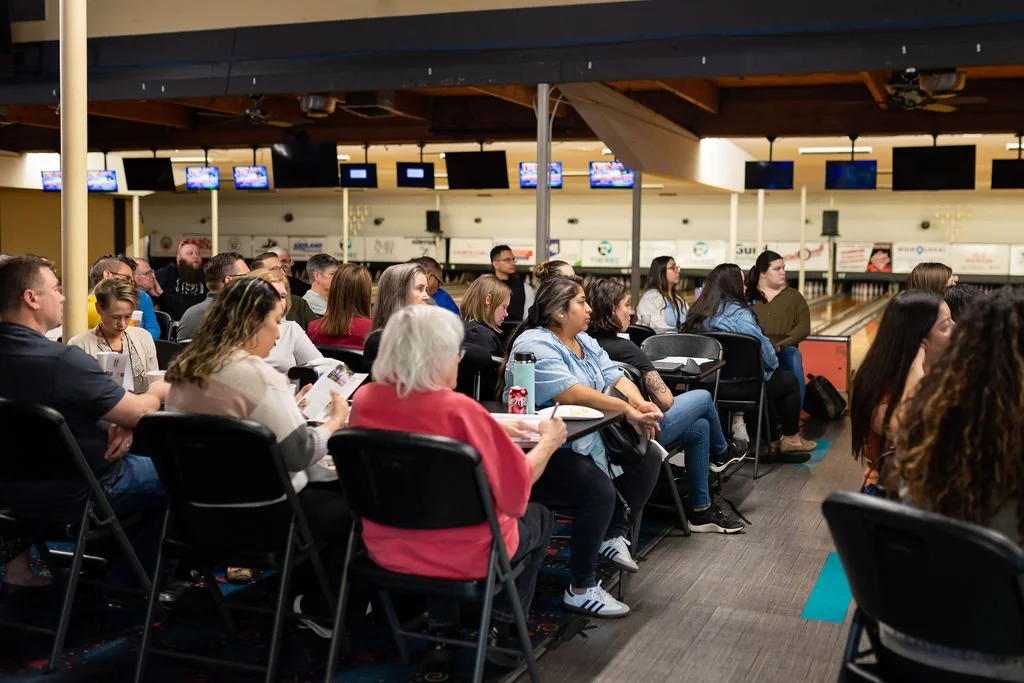Sitting at a Bigger Table with Those Who Aren’t Like Us
Written by Tim Buckley, May 2025
“Cut the head off the snake!” That’s how Ben McBride characterized the response to gang violence 15 years ago, when he and his family moved into Oakland’s “kill zone” where warfare between gangs and police claimed more than 100 lives a year.
That military-style strategy only increases the risk of more loss of life and alienation to those most at risk. “Radical belonging” is the antidote he advocates, and it is built into Salem’s ongoing Community Violence Reduction Initiative.
McBride’s liaison work between gangs and police in Oakland (Operation Ceasefire) helped reduce shootings by about 40 percent in five years, and lowered homicides by 25 percent. He has been actively engaged in Salem and Keizer’s effort to reduce gun violence.
McBride says that humans tend to congregate with like-minded people in circles. We look at those in different circles as “others”. They’re not part of our discussion, nor our decision-making. Our city budgets are built largely by those in one circle, who have little or no connection to those in other circles they label as “them.”
“We must enlarge the table,” he said, “and reduce the tendency to see difference as other. We must engage in radical belonging, inviting to the table those who see things differently, and who don’t trust anyone outside their circle.”
“This work isn’t magic,” he added, “it’s just the hard work of finding common ground between groups of people who have very little overlap in their frames of reference. It’s consistently finding methods for both parties to be humanized in practical, consistent ways.”
McBride sees CBEL’s philosophy, and especially the practice of empowering Neighborhood Family Councils, as being a natural fit with the radical belonging model. As amply demonstrated at CBEL’s most recent Collaborative, where he facilitated a conversation among 100 participants, it’s possible to quickly establish social cohesion between those with no common frame of reference. That’s the first step.
Abandon the Idea of Exclusion
“Looking at the issue of violence in our city, we tend to blame someone else for it,” McBride explained. “It’s the gangs’ fault, we might say, or the homeless people.” You ask business executives, homeowners, renters, city council members and police officers, and they’ll all point fingers somewhere else, blaming somebody else for our violence, for our lack of cohesion and trust.
“In order to have at the table those who carry and use guns, we have to be willing to listen to those people about the risk they face carrying a gun, and the risk they and their families face if they don’t carry a gun.”
“At the heart of safety is a sense of belonging,” he said. The “Call-In” program he outlined involves building trust between a broader range of people represented at the table. There might be three or four call-in gatherings a year, but the community must have a comprehensive network of participating resource partners to make sure the support is tangible and consistent throughout the year, and year after year.
Who’s At the Table:
At risk population: In a city our size, McBride said there are probably less than 100 individuals who are at the highest level of risk for violence. Everybody in this cycle is a victim, those with guns and those whose lives have been torn up because of gun violence. It is important that they are contacted, invited to the table and offered resources and respect in exchange for considering how best to leave their violent life behind. Trust building is a primary commodity. Having tangible resources to offer those at high-risk is mandatory.
Law enforcement. The consistent message at the table must be “we love you,” “we care about your well-being” and “we want your risk level to drop.” It’s important that the police and sheriff’s departments, as well as community corrections staff, fully buy into the idea, and not backslide into profiling. It doesn’t take much for trust to evaporate.
The “stick” part of the message is “You know there are consequences for continued violence, and we hope you’ll take our offer for support and resources instead.”
Health care. A trauma nurse, someone who can talk candidly about what caring for a gunshot victim looks like.
A mother who has lost a child or loved one. Having women at the table is very important. How powerful the message: “I don’t want you to be one of these young people killed.”
A “homey’. Someone who was once part of that lifestyle, who got out of it and who can talk about the value of having a life with less threat, a good job, a family.
Religious leader. Someone who can talk about the devastating impact of funerals to families and communities.
Cost: $2,500/month ($30,000 - $40,000/yr.) for each person being ushered through the program. Consider the comparable cost in the increased costs to contain violence, the inestimable cost of losing loved ones to violence, the loss of income and housing, and the mountain of medical and rehabilitation debt from those experiencing violence.
“At the end of the day, it’s not just about increasing safety and lowering violence,” McBride continued. “This is a comprehensive conversation that makes clear to the community how safety is a cornerstone for economic health, housing stability and educational achievement. Expanding the circle makes it possible to lower risk and reduce violence while creating upward mobility for those most at risk.”
In the CBEL model, in which Neighborhood Family Councils are decision-makers at a larger table, it is unthinkable that those who are at risk would be excluded from that table.
“The days of hanging out only with those who look like you, and who vote like you are over,” McBride concluded. “And we’re succeeding not by jumping first to ‘What do I need to do?’ but rather, ‘WHO I NEED TO BECOME?’ “





